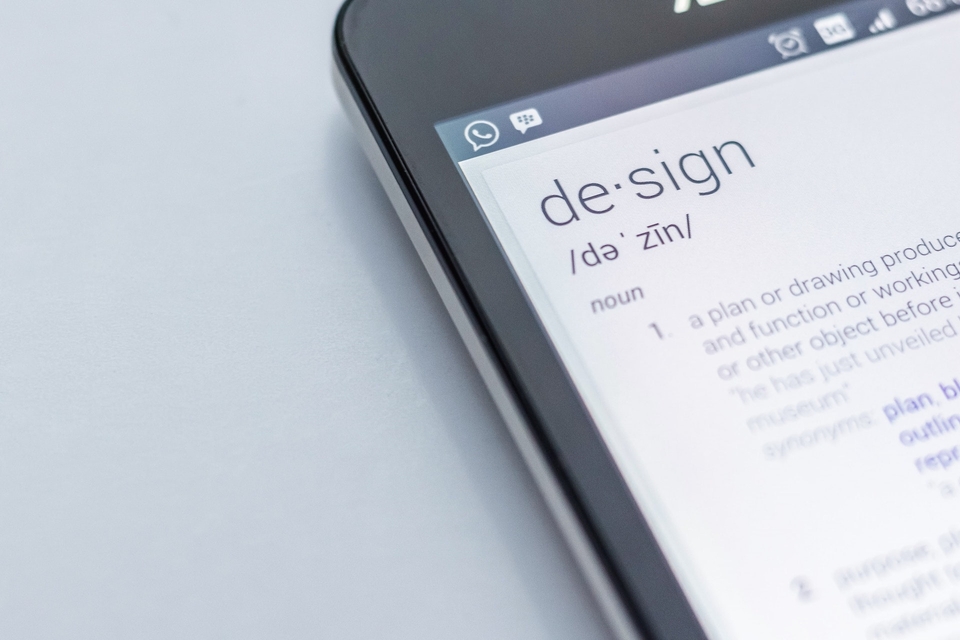The Only Glossary of Branding Terms You’ll Ever Need (With Over 40 Brand Terms, Explained!)

This comprehensive glossary of branding terms will help you understand over 40 different branding vocabulary words better than ever before.
- Brand
- Brand Ambassador
- Brand Archetypes
- Brand Asset
- Brand Attributes
- Brand Audit
- Brand Awareness
- Brand Coach
- Brand Consistency
- Brand Culture
- Brand Designer
- Brand Differentiation
- Brand DNA
- Brand Equity
- Brand Extension
- Brand Guidelines
- Brand Identity
- Brand Image
- Brand Management
- Brand Map
- Brand Marketing Landscape
- Brand Messaging
- Brand Mission Statement
- Brand Name
- Brand Personality
- Brand Personas
- Brand Positioning
- Brand Story
- Brand Strategist
- Brand Strategy
- Brand Valuation
- Brand Values
- Brand Vision Statement
- Brand Voice
- Branding
- Branding Agency
- Branding Tactics
- Branding Trends
- Tone and Voice
- Visual Identity
Whether you’re new to branding or just need a quick refresher, this comprehensive guide to the top 40+ brand terms in the industry is the only glossary you’ll ever need. Study it from top to bottom, jump straight to the term you need, or both! No matter how you use this branding vocabulary guide, you’ll be a better marketer, strategist, and business owner because of it.
Brand
Your brand is made up of your businesses’s values, vision, and visual identity. It’s both the personality and perception of your business. Your brand includes your business’s name and logo, fonts and colors, your tone of voice, the overarching mission and vision, and everything that makes your business unique. And the stronger your brand, the better your business.
Brand Ambassador
A brand ambassador is anyone you hire to represent your brand. They’re the face of your business, out in the world. Usually your brand ambassador is a leader in your business, a celebrity, a social media influencer, or anyone passionate about your brand. The best part about having a brand ambassador is that they give customers the chance to interact with your brand through a real person. If chosen well, your ambassador can help your brand connect with a wider audience.
Brand Archetypes
Psychiatrist Carl Jung theorized that our personalities largely fall into one of 12 archetypes: The Innocent, The Everyman, The Hero, The Rebel, The Explorer, The Creator, The Ruler, The Magician, The Lover, The Caregiver, The Jester, and The Sage. Well-developed brands actually fall into one of these personality archetypes too. Knowing your brand’s archetype helps you understand your target audience and how you’re perceived in the world. Once you assign an archetype to your brand, your whole business is more strongly aligned with your brand personality. That archetype, after all, is like a complete personality and relationship guide to your brand!
Brand Asset
Your brand assets are all the individual visual and text elements that come together to form your brand. Your overall brand appearance is composed of dozens or hundreds of these individual elements. Think: fonts, colors, your logo, and animations. Each is distinctive, but together they form your unique brand identity. These digital files are usually stored together in a digital asset management system for easy reference.
ZeBrand generates stunning, built-for-you, downloadable brand assets that can help tell your brand’s story. The templated tool is easy to use— no design experience necessary!
Brand Attributes
Brand attributes are the visual or intangible qualities that make your brand stand out and be instantly recognizable. Your common phrases, overall spirit and tone, and your distinguishing marks and names are all brand attributes. These are the elements that should come to mind when a customer hears your business name.
Brand Audit
What are we doing? What’s working? What’s not? These are the kinds of questions companies ask during a brand audit. It’s a full-scale deep dive into everything branding, for the purpose of finding improvement opportunities. Without these periodic brand inspections, over time, companies can find themselves far from their brand guide and out of touch with their customers. The result of a strong brand audit is a plan of action with outlined improvements, new priorities, and corrections where needed.
Brand Awareness
Could you customers pick your brand out of a line-up? If asked about a category of products or services, would your business’s name come up? Brand awareness refers to how many people actually know that your business's products or services are available to them. Stronger brand awareness (and a positive brand image) means better business! Curious how you can generate greater awareness? Start with our article: How to Build Brand Awareness.
Brand Coach
Branding on your own is tough! If you’ve been running your business for a while, it’s easy to lose perspective— and reliability. That’s where a brand coach comes in handy. They can help you notice your blind spots, generate fresh ideas, and get unstuck. Working with a brand coach from ZeBrand just might be the inspiration you need to supercharge your brand this year!
Brand Consistency
Brand consistency refers to using your brand’s look, feel, and sound uniformly across everything you deliver. A consistent brand creates familiarity among your customers. And familiarity generates powerful brand loyalty.
Brand Culture
What culture does your brand create around the workplace and among your brand fans? Hopefully, a healthy and positive one. A strong brand culture turns your followers into enthusiastic brand ambassadors, spreading your business quickly. Your people are the spirit and life behind your brand, and your brand culture is what keeps that spirit alive. How do you create a strong brand culture? Start here.
Brand Designer
This person is crazy about your branding! Their job is to help companies develop a strong brand guide, brand designs, and brand strategy. They research, study, and learn your industry to truly understand your brand personality and positioning. And they bring an outside perspective that helps existing brands get unstuck.
Brand Differentiation
Brand differentiation refers to how you set your business apart from other businesses in your market. It could be the special approach you take to delivering your product. Maybe it’s your particularly outstanding customer service or special pricing. It could even be added features your business offers that no one else does. And those valuable differentiation points should always show up in your messaging and marketing.
Brand DNA
Your brand DNA is the essence of who you are as a business. Your differentiating factors, your look and feel, your particular set of offerings, your positioning in the market, and your core values all make up your brand DNA. And like real DNA, it’s completely exclusive to you!
Brand Equity
Brand equity refers to the value of the public's positive perception and awareness of your brand. Is your brand instantly recognizable? Are you a household name? Do you have a distinctive tone? When the public thinks of your brand, do they think positively? These things increase your brand equity. Brand equity looks beyond the particular products and services you offer to calculate the value of your pure brand itself.
Before you keep reading, there are 5 things you should know about brand equity.
Brand Extension
When an existing brand uses their brand recognition to launch a new product in another category, that’s called a brand extension. If Tesla launched a line of motorcycles, for example, that would be a brand extension for the business. The benefit of brand extensions is that the new product carries over the reputation and name recognition of the parent brand.
Brand Guidelines
Brand guidelines are the set of rules that govern your brand's look, feel, and sound. They define how you use your logo, which colors you put where, and what tone you communicate in. The more clear and easy-to-follow your brand guidelines, the more cohesive your overall brand. And the more loyal your customers. To learn more about brand guidelines, take a look at our article: Everything You Need to Know About Brand Guidelines (with examples!)
Brand Identity
Your brand identity consists of all the individual pieces that make up your brand. What makes it unique? Your visual elements, business values, voice, tone, and messaging all go into your brand identity. These elements are all developed with the aim of building a brand that’s relatable, relevant, and personable.
Brand Image
What do average, everyday customers believe about your brand? How does the public perceive your business? That’s your brand image. It may not always be aligned with how the business views itself or what it’s striving for.
Brand Management
Brand management keeps your entire brand strategy on track. Is your logo being used correctly? Are your colors in the right places? Is your font uniform? These are questions brand management looks at to make sure you’re putting forth a cohesive, strategic look, feel, and sound.
Brand Map
A brand map is a 30,000ft overview of your entire brand. It shows everything your brand offers, how much you charge, what team members fulfill what roles, why you exist as a brand and who you’re targeting. It’s a comprehensive map that helps align your entire team at-a-glance.
Brand Marketing Landscape
These are all the key marketing and marketing-related companies available for businesses to partner with. Over the past several years, the marketing landscape has changed drastically. New technology, the growth of social media, and increasing digitization have changed the biggest players in the marketing world. Learn more about the changing brand marketing landscape and where ZeBrand fits in, here.
Brand Messaging
Your brand messaging is what your brand says and how it says it. Your messaging positions your brand in the marketplace, communicates your values, and aligns your voice and marketing. Through your messaging, customers learn why you’re different and why they should pay attention to your brand.
Brand Mission Statement
Your brand mission statement is the set of goals and values that your business is built on. What mark do you want to leave on the world? Why do you exist as a brand? Who are you and why do you want to reach that lofty vision? If writing your mission statement feels daunting, browse over 100 examples of mission statements from brands around the world. Then check out our how-to guide for writing your own mission statement step-by-step.
Brand Name
This is the name your brand will be identified by, hopefully for years to come. A great brand name is clear, informative, and easy to remember. It may be a mash-up of two common words, a play on existing words, or a totally invented word. If it’s easy to spell, clear to pronounce, and catchy, you’ve got a great name! We’ve got a ton of great tips for coming up with your brand name in our guide: Naming Your Brand or Business.
Brand Personality
If your brand were a person, what traits would it exhibit? Would it be loud and vibrant? Funny and outgoing? Warm and caring? Maybe even geeky? Together, those individual traits form your brand personality. And that’s what makes your brand feel real and personal.
Brand Personas
Your brand persona is like a buyer persona, but it focuses on who your brand is as a person. It may sound funny to think of your brand in that way, but your brand really should have its own personality. And that personality can be captured and defined through a persona. A brand persona also makes the key characteristics of your personality easily quantifiable and shareable across your teams.
Brand Positioning
Your brand positioning is what makes your brand unique. It’s made up of the voice, values, and visual identity that make your brand stand out and be instantly recognizable. Your positioning instantly tells the world what you are, who you’re for, and why they should be interested. And it should be carefully tailored to appeal to your ideal customers.
Want to learn more about brand positioning? We have a simple guide that outlines brand positioning in three easy-to-follow steps.
Brand Story
How did your brand come to be? That’s your brand story! It’s not the story of how you decided to launch your business. It’s the narrative of how this brand was born and what it’s going to do for the world. It should be exciting, inspiring, and relatable to your customer. In our article What is a Brand Story and Why is it Essential to Your Success, we cover the basics of building a compelling brand story that customers truly rally around.
Brand Strategist
A brand strategist is someone who helps businesses develop their unique set of brand guidelines. They use research, business expertise, and marketing know-how to partner with companies and build an effective brand strategy. The brand strategist’s outside perspective and deep understanding of target audiences gives these companies ideas and tactics they otherwise may never have thought of.
Brand Strategy
Your brand strategy is the who, where, when, and what that drives every marketing, advertising, and communication action you take. Once you’ve got your target set, your brand strategy works backwards to figure out how to meet that target with a specific set of tactics. Before your business does anything, you should ask yourself, “Is this in line with our brand strategy?” Only when your business stays on-target can you hit your biggest objectives and goals.
The more clear and concise your brand strategy, the more likely it is to be successful. These seven easy-to-follow tips can help your business develop a powerful, effective brand strategy.
Brand Valuation
If you add up the values of all your brand’s tangible and intangible assets (like your logo, key phrases, brand voice, and designs) that dollar amount is considered your brand valuation. This valuation shows how successful your overall brand is— and how much it’s contributing to the success of your business.
Brand Values
These are the core beliefs your business holds to, no matter what. These beliefs shape how you approach customers, the marketplace, your team, and the world. A strong set of brand values also guides your decision-making process. When faced with options, your business should always choose the path that best aligns with their values.
Brand Vision Statement
Your business’s vision statement describes what you want to become and how you’re going to get there. It’s a grand manifesto, a pie-in-the-sky dream that evokes emotion, inspiration, and enthusiasm. And that vision should guide everything you do, from product development and employee onboarding to marketing and social media strategy. To get started writing your own brand vision statement, browse over 100 vision statement examples. Ready to write? Start with our simple vision statement how-to guide.
Brand Voice
Brand voice refers to how your brand sounds. How do you channel emotion, communicate meaning, and engage with your customers? The stronger and clearer your brand voice, the better stories you can tell. And stories sell.
Wondering where to start? Check out our guide to Finding Your Brand Voice
Branding
If your brand is your business’s values, vision, and visual identity, your branding is the process of creating those individual elements. It’s a process of discovery, research, creativity, and personality development. In the end, branding leads to an encompassing visual and written personality that’s relatable, strategic, and engaging.
Branding Agency
An agency that specializes in developing and maintaining a holistic brand narrative. Branding agencies go beyond marketing and advertising. They include your brand visuals, values, and voice to create a full personality to represent your business. Branding agencies also use careful strategies and specific tools to build a relatable brand that customers can’t help but shop with.
Branding Tactics
These are individual strategy elements your brand can use to drive greater website traffic, make a splash, and grow your customer base. On their own, branding tactics aren’t a marketing campaign. But alongside other marketing elements, branding tactics can have a powerful impact on your business. To learn more, check out our article: 5 Simple Branding Tactics You Can Use.
Branding Trends
Branding trends are concepts, ideas, or visual identities a number of brands exhibit in common. Some trends are short-lived while others are evergreen. Brand trends like eco-friendly activism and customer-input campaigns are the kind of trends that are here to stay. Here are five more branding trends that aren’t going anywhere.
Rebranding
A rebrand is a significant change to an existing brand. Some rebrandings are total overhauls, from logo and colors to visual identity and voice. Others are lighter lifts, like a logo refresh but no color changes. The depth of your rebrand is usually determined by the purpose. If it’s been a decade since your business got a redesign, a full rebranding might be necessary. If you change a little every year, a small refresh to better align your business with your target audience may be enough. If you’re considering rebranding your business, read our guide to rebranding successfully first!
Tone and Voice
This refers to how your brand sounds. What kinds of words do you use— or not use. Is your brand personality funny and lighthearted, fully professional, or completely casual? Your tone and voice should convey that. They also work together to develop your brand positioning: How you differentiate yourself from your competitors.
Visual Identity
Visual identity refers to what your brand looks like. What are your fonts, colors, photography styles, logo versions, and animations? What makes your business visually recognizable? The more cohesive these elements, the stronger your overall brand identity. For a full deep dive into building a visual identity that stands out, read our article: The Beginnings of Visual Identity.


